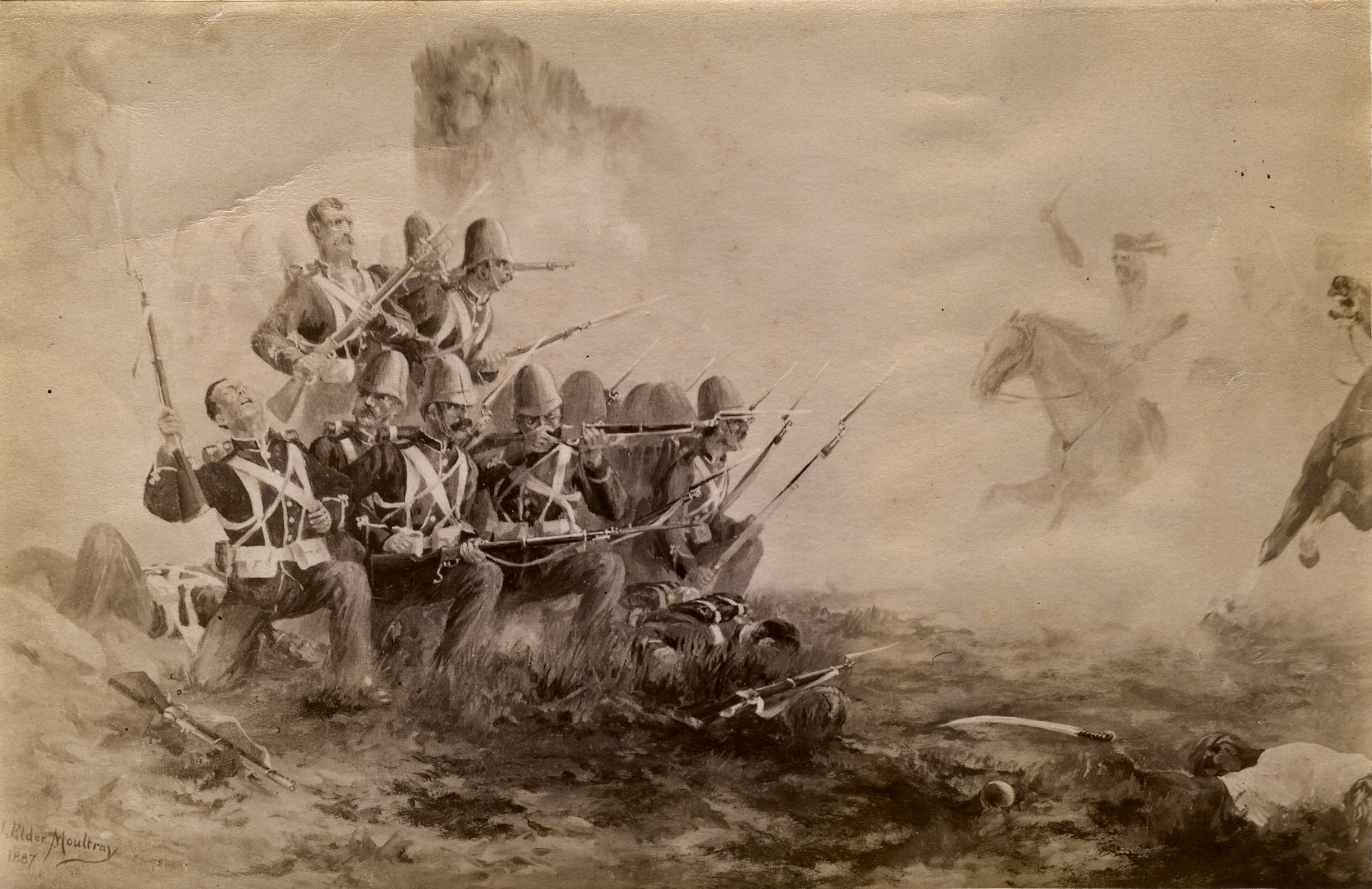The Last Stand of Lieutenant Henn and his Sappers
/
The Last Stand of Lieutenant Henn and his Sappers
d. 1880
March 13, 2022
The story of Leuitenant Henn commemorated in a window in the North Nave Aisle and the ‘Native Sappers and Miners’ commemorated in the 1888 Royal Engineers memorial mosaic at the west end of the Nave.
The uppermost right-hand arch in the memorial feature the names of casualties from the Afghanistan Campaign of 1878-1880.
The inclusion of non-Christian casualties in a Cathedral memorial is perhaps unique. These were Bombay Sappers that fought alongside Lieutenant Henn at the Battle of Maiwand in the Second Anglo-Afghan War (1878 to 1880).
On 27th July 1880, a force of British and Indian troops was overwhelmed by Afghan soldiers and tribesmen at Maiwand, 50 miles west of Kandahar in Southern Afghanistan, in a notorious Victorian military disaster. Henn was one of 11 soldiers to make a famous last stand during the disordered retreat.
Three scenes from the life of Jonathan, North Nave Aisle west end
Clayton & Bell, unveiled 1883. Inscription at base 'In memory of Thomas Rice Henn, Lieutenant Royal Engineers/Killed in Action at Maiwand Afghanistan 27th July1880. Faithful unto Death'. Three scenes from the life of Jonathan arranged in a vertical row of three roundels, each encircled with a Latin text from the First Book of Samuel.
In September 1879, after the murder of Sir Louis Cavagnari, the British envoy in Kabul, an army under General Roberts advanced into Afghanistan. Later in the following year, an army under Ayub Khan marched on Kandahar, from which fortress General Burrows with a small force issued forth to meet them, and attacked them at Maiwand. Deserted by some of his allies, outflanked and seriously outnumbered, Burrows after a hard fight was obliged to fall back. His native troops were in disorder, and the retreat became a rout.
Lieut. Henn RE was stationed with his Native Sappers alongside E/B Battery RHA, which bore the brunt of the enemies fire. When the order to retire was given four guns got clear, but the left section was rushed and lost, together with Lieut. Henn and his Sappers. The battle is known in Brtish military history as the scene of the stand of the Last Eleven, formed of eight survivers of the 66th Regt. together with Major Blackwood R.A, Lt. Henn, and Lieut. C. W. Hinde of the 1st Bombay Grenadiers. However, The History of the Royal Engineers notes ‘Major Blackwood had been seriously wounded and laid out in a garden, and Lieut. Hinde was not found in the place where the last stand was made. It would appear than Henn and his Sappers formed part if not all of the last fatal stand’.
The Last Stand was imagined by several artists in the 1880s. The Last Eleven at Maiwand by Frank Feller (1848-1908) (Wikimedia).
The last stand was made in a small enclosure at a garden in a place called Khig. Though the Afghans shot them down one by one, they fired steadily until only eleven of their number (two officers and nine other ranks) were left, and the survivors then charged out into the masses of the enemy and perished. It was reported to the British later that year by a former officer of Ayub Khan's army, who said that the Afghans had been truly impressed by the bravery of those men (Stacpoole-Ryding & Chaloner 2008).
The British defeat at Maiwand has inspired artwork, poems (such as Kipling’s “That Day,”), memorials dedicated to the heroic on both sides, and literature. Maiwand was the Battle were John H. Watson M.D. received the notorious wounds that invalided him home and led to his meeting with Sherlock Holmes (see Reminiscences of Maiwand by M. Vernet).
'The Last Stand of the British at Maiwand, Afghanistan, 27 July 1880' by John Elder Moultray (Wikimedia)
The battle was one of the three disasters for the British Army between 1879 and 1881, the other two were Isandlwana (Zulu War) and Majuba Hill (1st Boer War). Seeking to downplay the poorly orchestrated campaign, General Primrose in charge of the occupation of Afghanistan omitted mention of ‘Henn and his Sappers’ heroism in official dispatches – possibly why pains were taken to include their names on the memorial.
Jacob Scott
From the notes of R. J. Trett in the Chapter Library
References and Further Reading
Stacpoole-Ryding, R. J.; Chaloner, A. 2008. Maiwand: The Last Stand of the 66th (Berkshire) Regiment in Afghanistan, 1880. History Press.
Trett, R. J. Naval & Military Memorials of Rochester Cathedral. Vols. 1-5. Unpublished notebooks in Rochester Cathedral Chapter Library.








